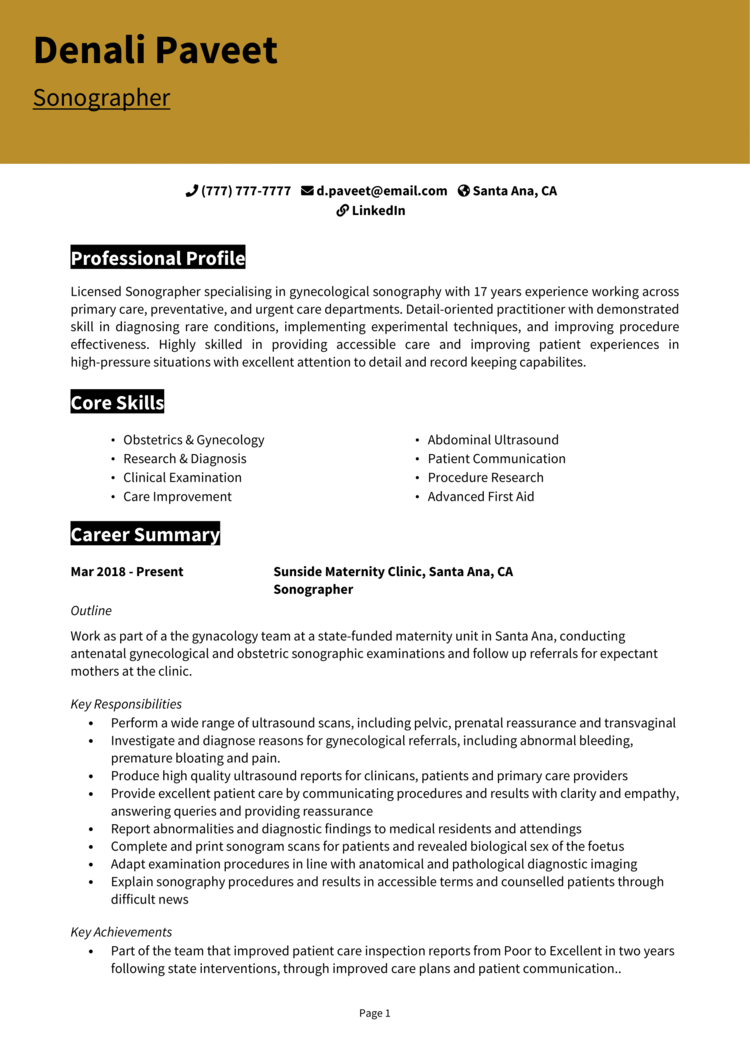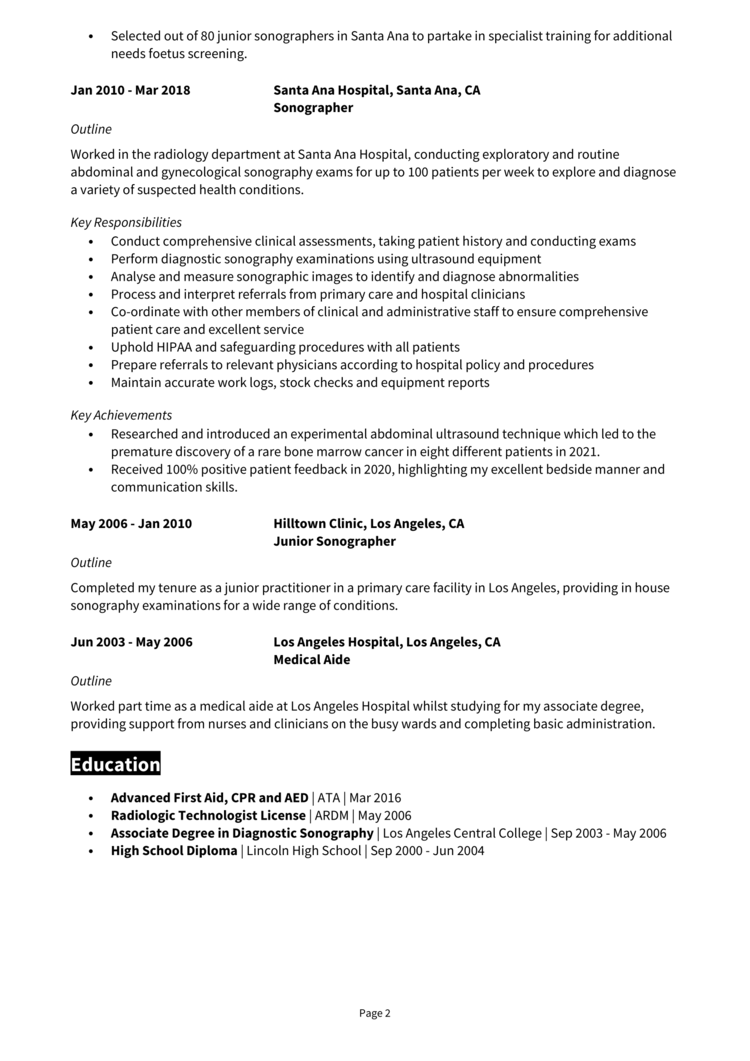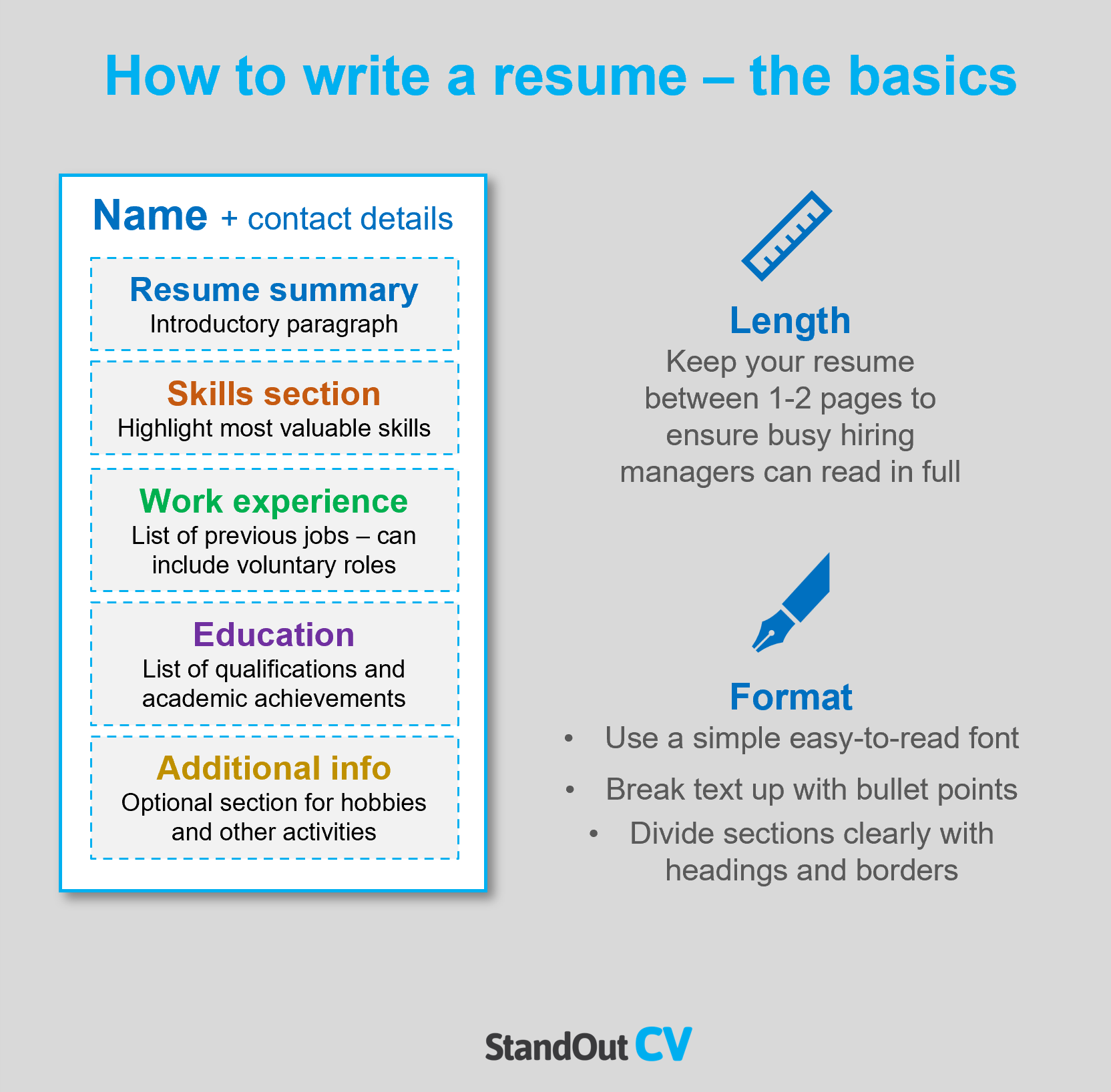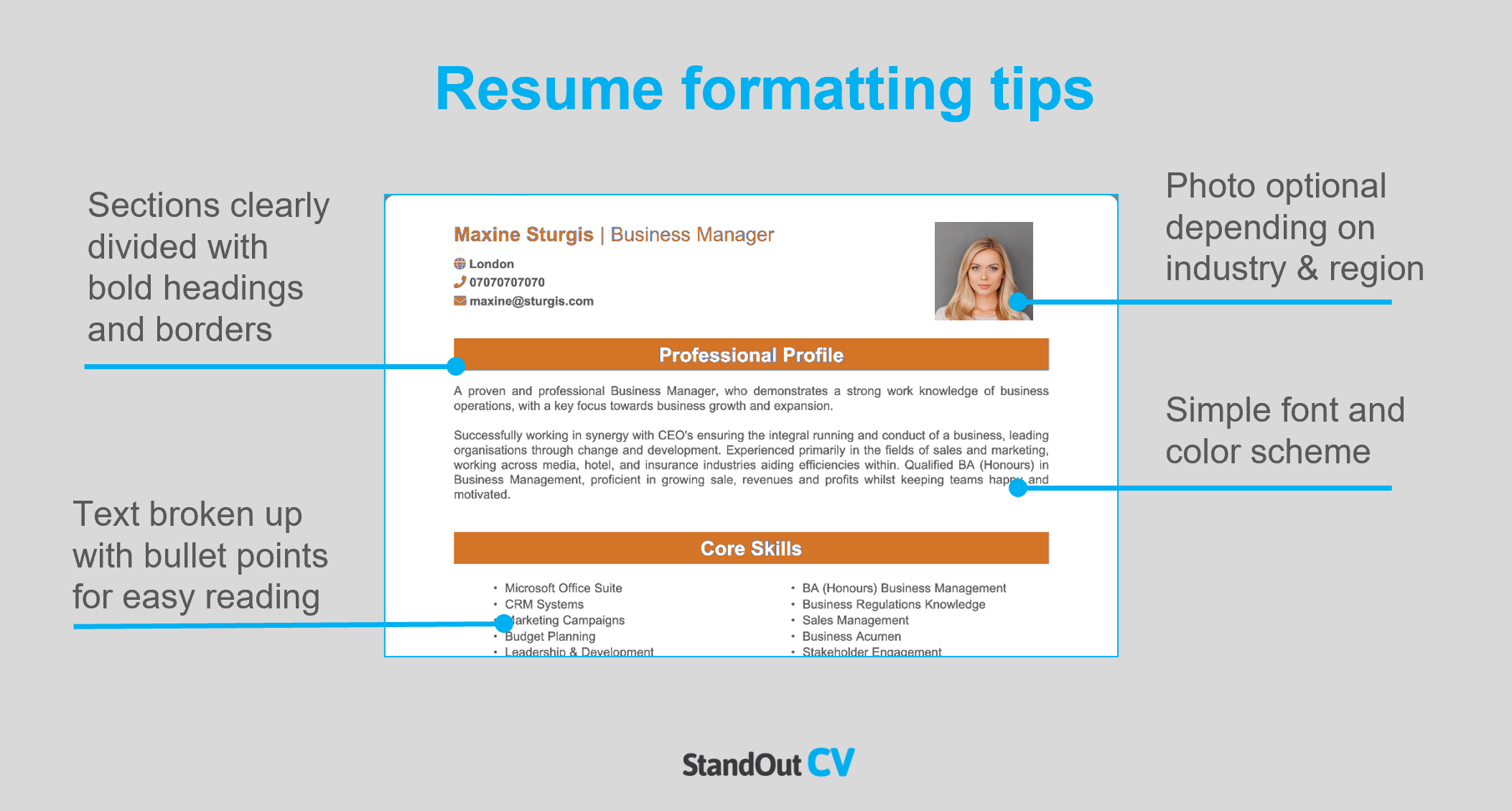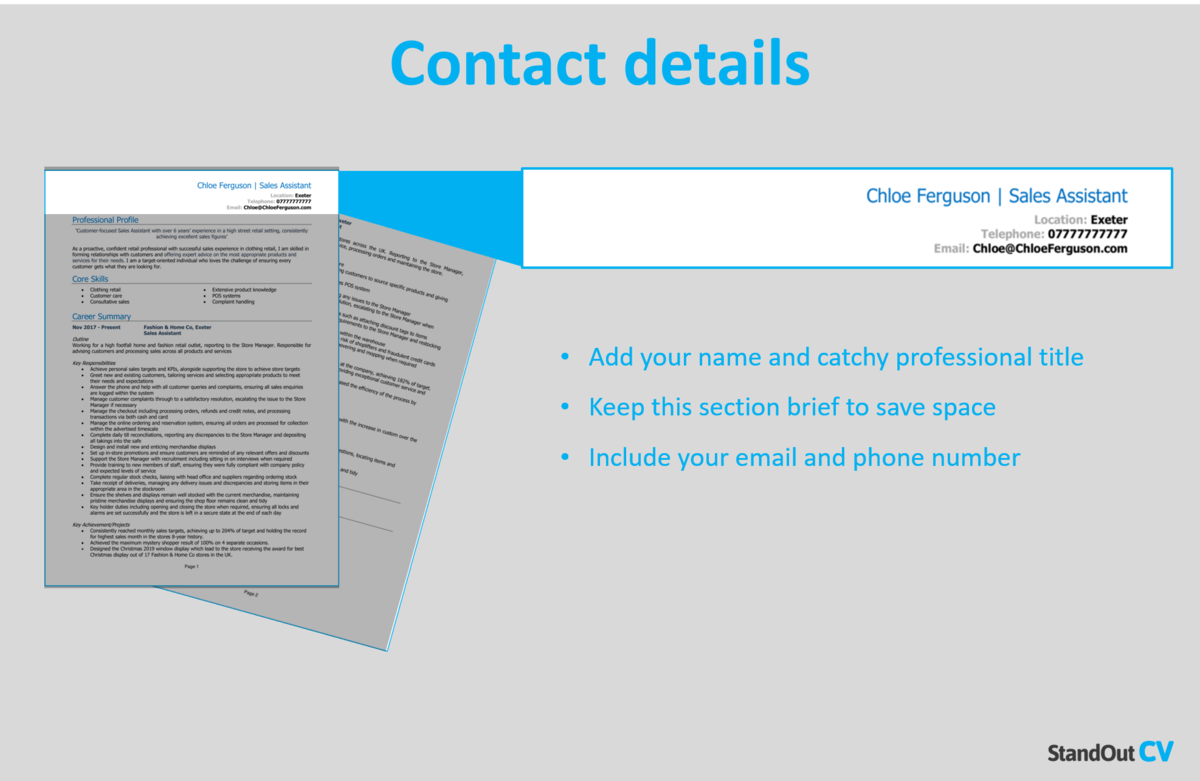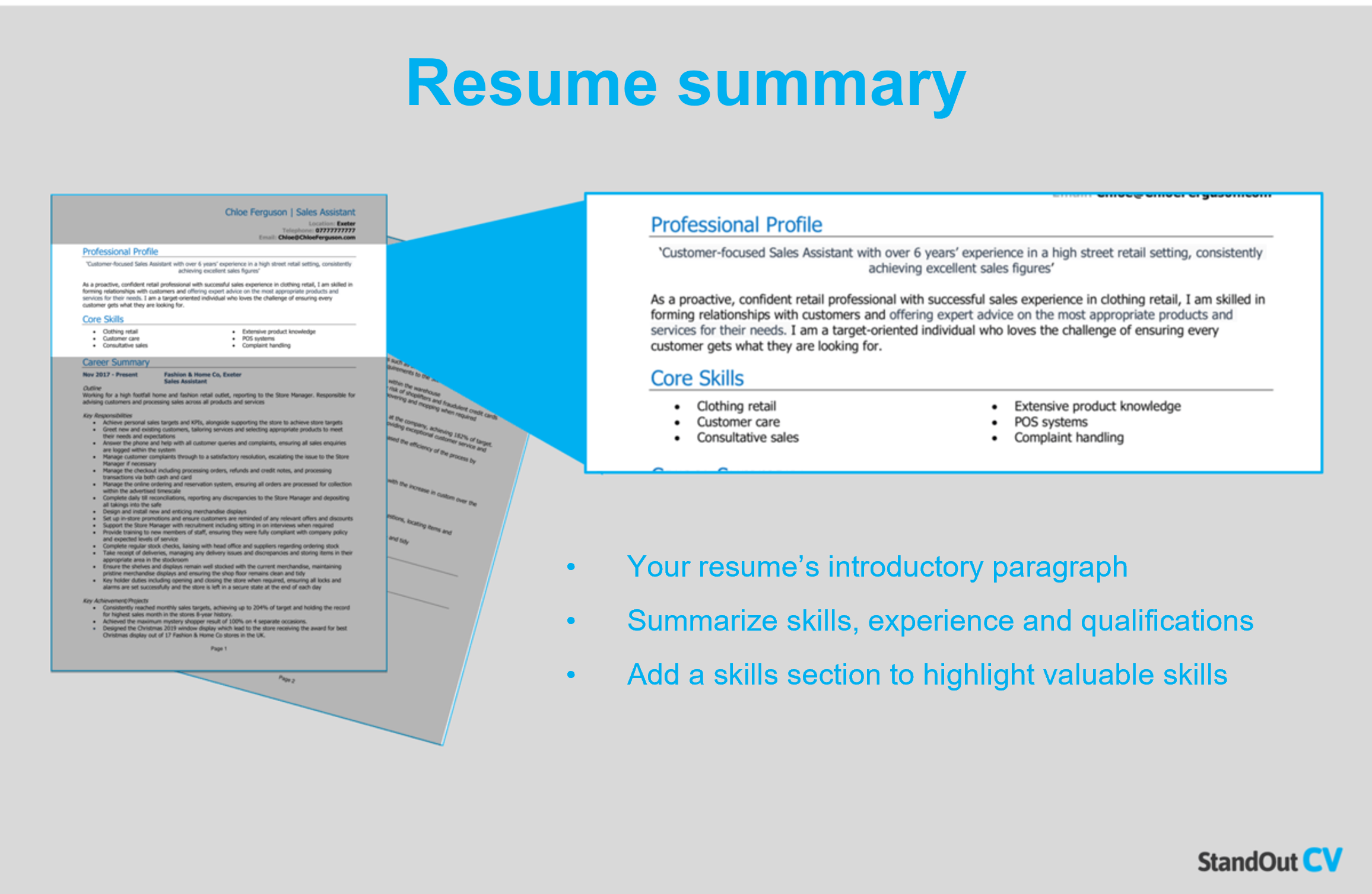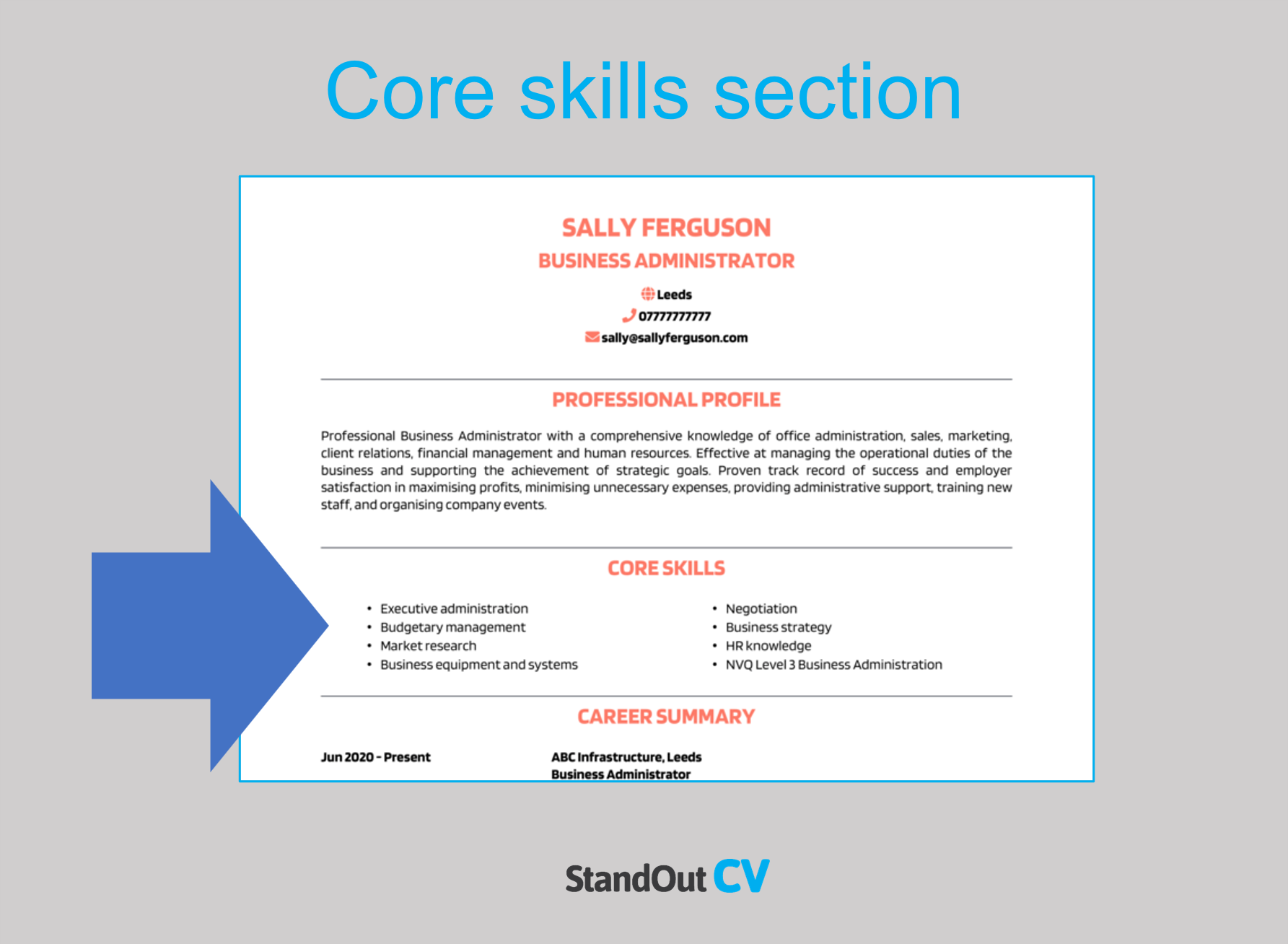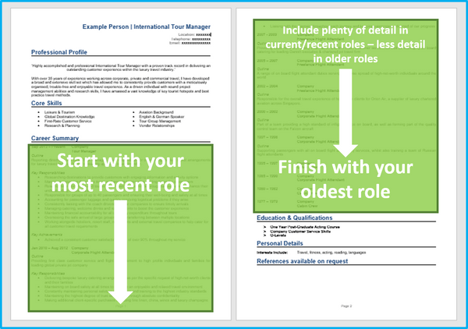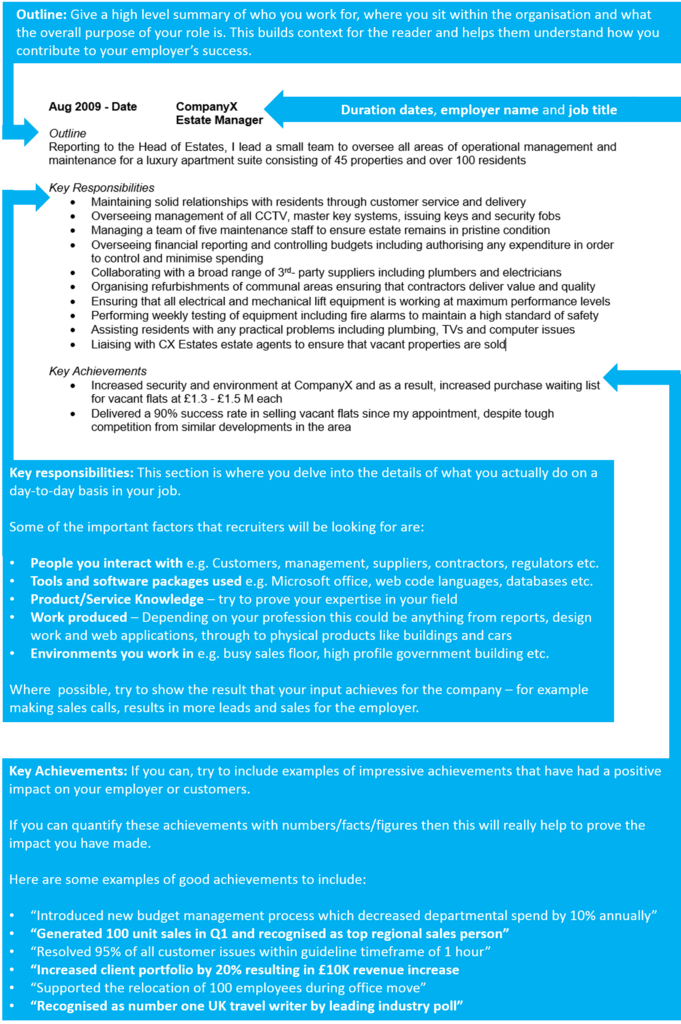As a sonographer, you get to share in some of your patient’s most magical moments, but first, you’ve got to secure yourself the job, and in order to do this, you need a standout resume.
So before you begin scanning the job market, it’s time to perfect your application.
In this guide, we’ll teach you how to craft a resume that will get you noticed. Check out our sonographer resume example and top tips below.
Contents
|
Sonographer Resume Example
From the Sonographer resume example above, you can see the kind of information your resume will need to include, and the layout you will need to create for an easy-reading experience.
The rest of this guide will show you how to apply this format to your own unique situation, and create a resume that will attract the best employers in your industry.

Sonographer resume layout and format
Formatting and structuring your resume correctly is key to landing job interviews.
Your resume needs to look attractive, but more importantly it needs to be easy for recruiters and hiring managers to read and digest the information.
These tips will help you to do that:
Formatting your resume for success
- Length: To ensure that recruiters will read all of your resume, limit its length to 2 pages – as they someteimes read hundreds of resumes daily.
- Font & readability: Complex fonts are a readers’ worst nightmare and will leave recruiters struggling to understand your message. Use a clear simple lean font in a color that stands out against the page, and break your text up with bullet points to make the content easily digestible.
- Layout & Structure: While creating an attractive resume, it is crucial not to compromise functionality for design. To ensure both, use bold headings and borders to structure the page into clear sections.
- Photos: You are not obliged to add a photo to your resume in the USA, but it can be a nice way of adding some life to the document.
Quick tip: Achieving a professional look for your resume can be difficult and time-consuming. If you want to create an attractive resume quickly, try our quick-and-easy Resume Builder and use one of their eye-catching resume templates.
Resume layout
Organize the document into these sections when you write your resume.
- Name and contact details – Employers need to know how to get in touch with you – so list your email and cell phone number here.
- Resume summary – An intro paragraph at the top of the resume which summarizes your suitability for target jobs.
- Skills section – A bullet-pointed list of your most relevant skills and knowledge.
- Work experience – A list of your previous jobs (or at least the most relevant and recent ones)
- Education – Add academic and professional qualifications that prove you can carry out the job
- Additional info – If they are relevant to the jobs you are applying for, you can add an extra section for things like hobbies and interests.
Here’s what to include in each part of your resume.
Contact Details
Add your name and contact details to the very top of your resume, making it easy for recruiters to get in touch
- Name and profession title
- Cell phone number – or another number you can answer quickly
- Location – Add your local area such as San Diego or New York – not your full address as that will take up too much space.
- Email address – Use your name or close variation – no nicknames from high school.
You can add a link to your LinkedIn profile if you have one – you do not need to include personal details like date of birth or marital status.
Sonographer Resume Summary
Start your resume with a bang by adding a powerful summary to the top, summarizing your most valuable skills and experience.
This short paragraph is your chance to show recruiters why you are a perfect fit for the job and encourage them to read more of your resume.
How to create a resume summary that will get you noticed:
- Keep it short: To capture a recruiter’s attention and keep them interested in your resume, limit your summary to 4-7 lines as you only have a few seconds to make an impression
- Tailor to target jobs: Tailor your resume to your target jobs by studying the job description and adding as many matching skills as you can.
- Avoid using cliches: You might be a “highly motivated go-getter who thinks outside the box” but generic meaningless cliches like that don’t tell employers much about you – stick to factual information in your summary.
Example resume summary for Sonographer
What to include in your Sonographer resume summary?
- Summary of experience: What kind of companies have you worked for in the past? And which jobs have you carried out?
- Relevant skills: Include your skills which are hyper relevant to Sonographer jobs to instantly show your suitability.
- Qualifications: Showcase your level of education with a quick mention of any qualifications that are essential for the Sonographer roles you are applying to.
Quick tip: Choose from hundreds of pre-written summaries across all industries, and add one to your resume with one-click in our quick-and-easy Resume Builder. All written by recruitment experts and easily tailored to suit your unique skillset and style.
Core skills section
Underneath your summary, write a core skills section to make your most relevant skills jump off the page at readers.
It should be made up of 2-3 columns of bullet points of your relevant skills.
Before you do this, look over the job description and make a list of any specific skills, specialisms or knowledge required.
Then, make sure to use your findings in your list. This will paint you as the perfect match for the role.
Best skills for your Sonographer resume
Knowledge of anatomy and physiology – Maintaining a strong understanding of the human body and how it functions to properly assess and diagnose patients.
Medical terminology – Utilizing medical terminology when communicating with healthcare professionals, interpreting medical orders, and documenting findings.
Equipment operation and maintenance – Operating, troubleshooting, and maintaining ultrasound equipment.
Diagnostic imaging techniques – Using different imaging techniques and protocols to obtain quality images and make accurate diagnoses.
Patient care and communication – Providing compassionate and professional care and explaining procedures and results.
Medical record-keeping – Maintaining accurate documentation including patient records and keeping track of diagnostic images and reports.
Results analysis – Analyzing images and identifying potential issues or abnormalities.
Quick tip: Our quick-and-easy Resume Builder contains thousands of in-demand skills for every profession that can be added to your resume in seconds – saving you time and greatly improving your chances of landing job interviews and getting hired.

Work experience
Once you’ve hooked the hiring manager with your summary, you can really blow them away with you work experience.
List your previous jobs from newest to oldest to show the impact you made at each organization.
If you have years of experience, you can leave out some of the older jobs, and if you have little/no experience, you can bulk this section up with voluntary work and college placements.
Structuring your jobs
Without a good structure, your job description can look messy and overwhelming to anyone reading them.
Make it easy for recruiters to read your work experience by structuring your roles like this.
Job outline
Start with a 1-2 sentence outline of the role, summarizing what the goal of your position was, who you reported to (or managed) and the type of organization you worked for.
Key responsibilities
The bulk of the role description should be comprised of bullet points that explain all of your duties in the job.
Keep the sentences short and simple to make them easy for recruiters to digest.
Key achievements
Show employers the value you can bring to them by adding a few achievements to your jobs.
Whether you’ve saved the company money or improved an internal process, let recruiters know
Add some numbers to give readers a real scale of the impact, e.g. “reduced call wait time by 10%”
Example job for Sonographer resume
Outline
Work as part of a the gynacology team at a state-funded maternity unit in Santa Ana, conducting antenatal gynecological and obstetric sonographic examinations and follow up referrals for expectant mothers at the clinic.
Key Responsibilities
- Perform a wide range of ultrasound scans, including pelvic, prenatal reassurance and transvaginal
- Investigate and diagnose reasons for gynecological referrals, including abnormal bleeding, premature bloating and pain.
- Produce high quality ultrasound reports for clinicians, patients and primary care providers
- Provide excellent patient care by communicating procedures and results with clarity and empathy, answering queries and providing reassurance
Quick tip: Create impressive job descriptions easily in our quick-and-easy Resume Builder by adding pre-written job phrases for every industry and career stage.
Education section
Towards the bottom of your resume, add your education section.
Here you should list your professional qualifications and academic record, such as high school diplomas or college degrees.
If you have lots of work experience, you can keep this section brief (because recruiters will be more interested in your career. If you have little/no experience then you should bulk this section up with plenty of detail.
Additional information
The bottom of your resume is a place to add any “additional info”
Any other info that didn’t fall into any of the previous sections can be added here.
If you have hobbies that are related to your profession or any awards or publications – add them here.

Writing your own Sonographer resume
A winning Sonographer resume should look great, read well, and sell your skillset to hiring managers.
If you follow the steps above, you should be able to bag yourself a top job in no time.
And don’t forget you can use our quick-and-easy Resume Builder if you want to save time and ensure your resume contains the very best content.
Good luck with your job search!
